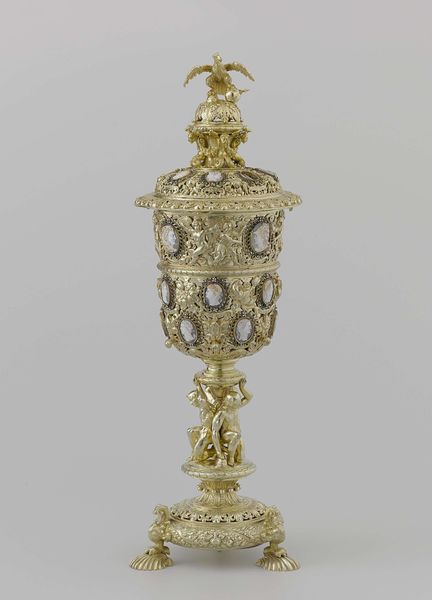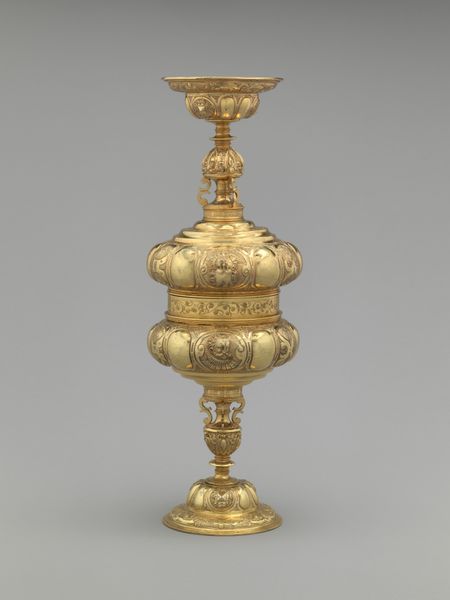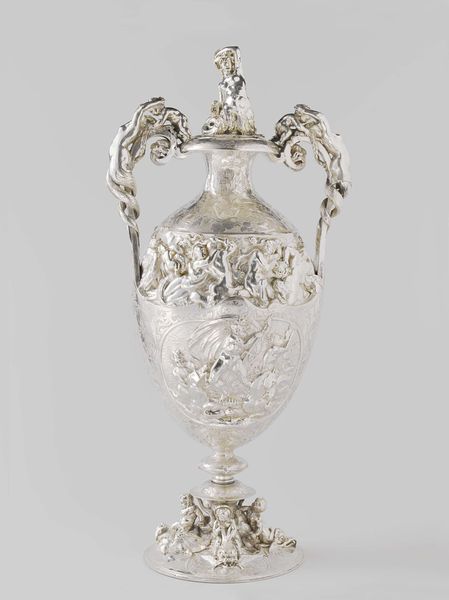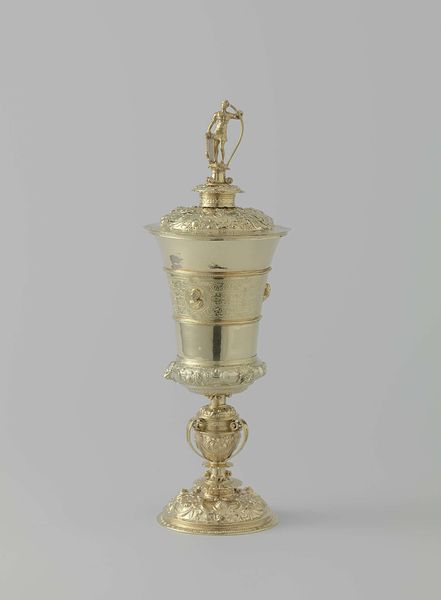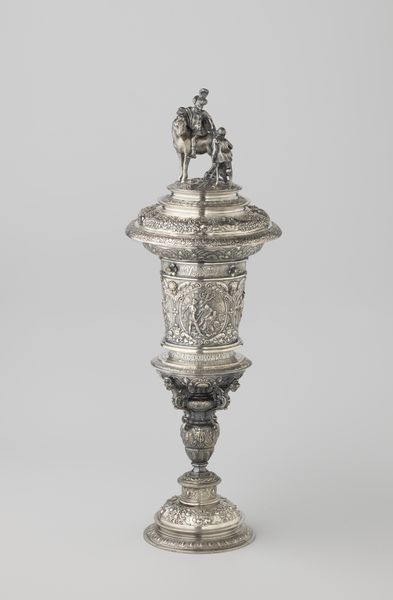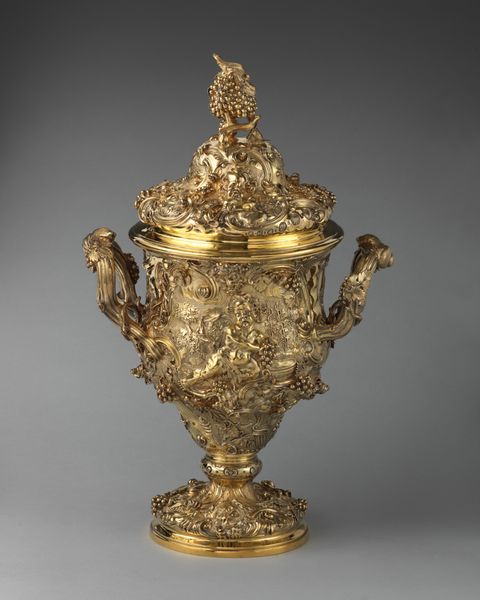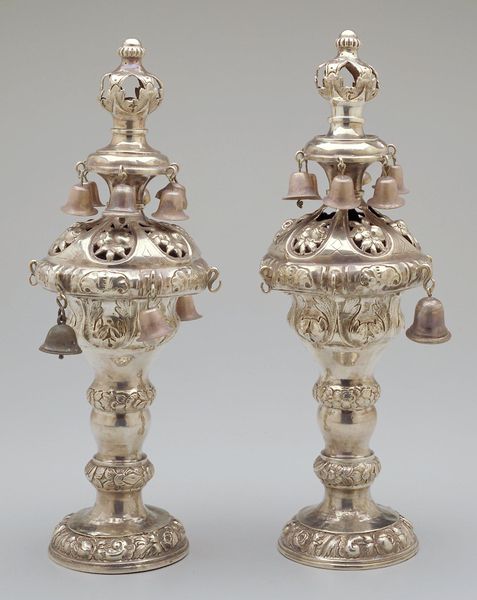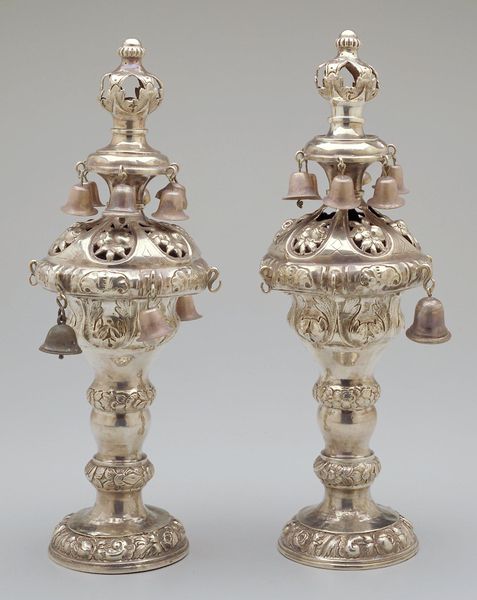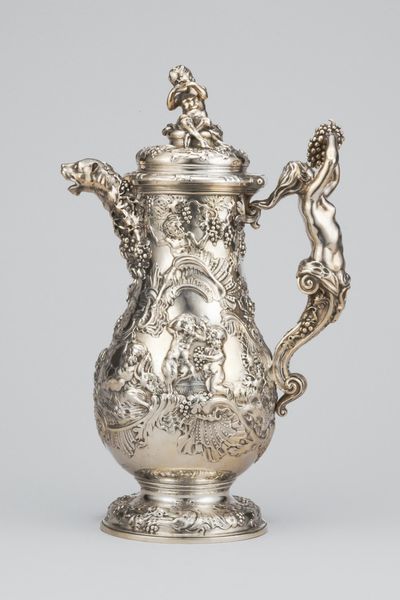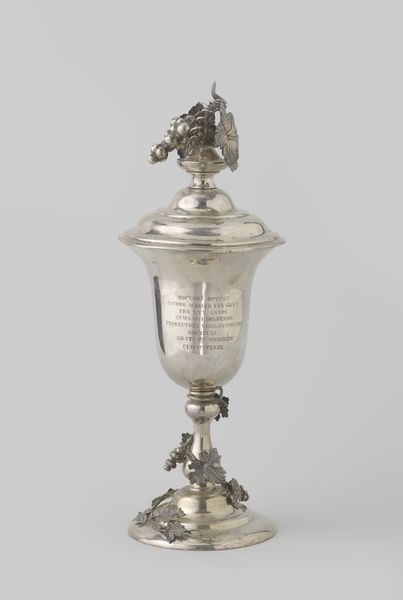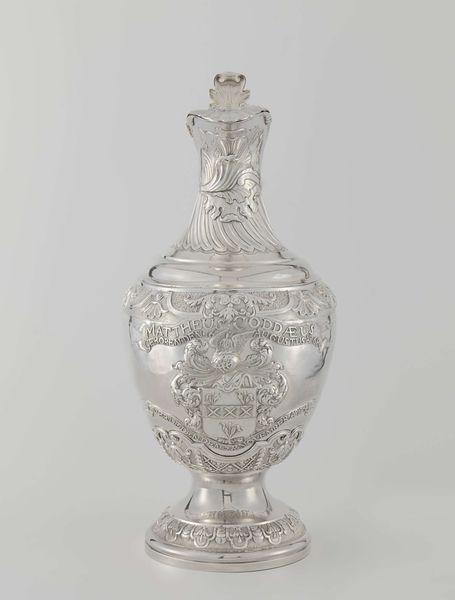
silver, metal, sculpture
#
portrait
#
silver
#
baroque
#
metal
#
figuration
#
11_renaissance
#
sculpture
#
decorative-art
Dimensions: height 24.5 cm, diameter 12.7 cm, weight 967 gr
Copyright: Rijks Museum: Open Domain
Editor: This striking sculpture, "Two Glass Holders" made in 1609 by Leendert Claesz, uses silver as a medium and stands out as Baroque decorative art. The detail seems incredibly intricate and it seems to be divided into sections. What details jump out to you as particularly noteworthy? Curator: Immediately, the formal articulation of each tier arrests the gaze. Note how Claesz utilizes distinct registers—a broad, symbolically weighty base giving way to a constricted waist, swelling into the ornate cup. The use of relief creates visual complexity, enhanced by the reflective property of the silver. Editor: You mentioned registers. Is that typical of Baroque work? Curator: Structurally, it is more a hallmark of Renaissance design but Baroque artists embraced ornamentation, exemplified by the cherubic figures atop. Notice also the bestial masks flanking the cup—these disrupt any static reading, activating the surface through contrast and variation. How does the symmetry impact the overall composition? Editor: The symmetry feels intentional, adding balance, but those small details add a degree of lively asymmetry... It is as though balance is achieved and broken simultaneously. Curator: Precisely. This tension exemplifies the Baroque aesthetic. While Renaissance ideals sought harmony, Baroque favored dynamic compositions rife with internal contrasts, visible even here in the juxtaposition of static, heraldic shields with grotesque masks. The materiality, too, is significant, because the choice of silver reinforces not only its inherent qualities but also the piece's functionality as something designed to be treasured. Editor: It's fascinating how analyzing the form reveals so much about the intent and period. I now appreciate the tension embedded within its symmetry and asymmetry. Curator: Indeed. Through close observation of an artwork's inherent visual qualities and materials, we come closer to understanding its overall composition.
Comments
rijksmuseum about 2 years ago
⋮
The foot of a wine glass could be secured in the four clamps (shaped like sea creatures) at the top of this holder. Together, the glass and its holder make an impressive drinking vessel, which was probably brought out only on ceremonial occasions. The two glass holders belong to a set of five that was commissioned in 1606 by the treasurers of the Amsterdam City Council.
Join the conversation
Join millions of artists and users on Artera today and experience the ultimate creative platform.
